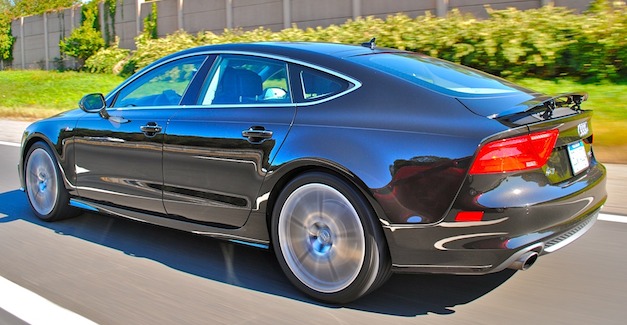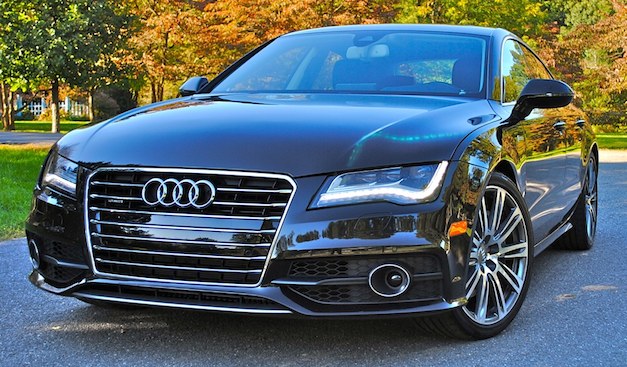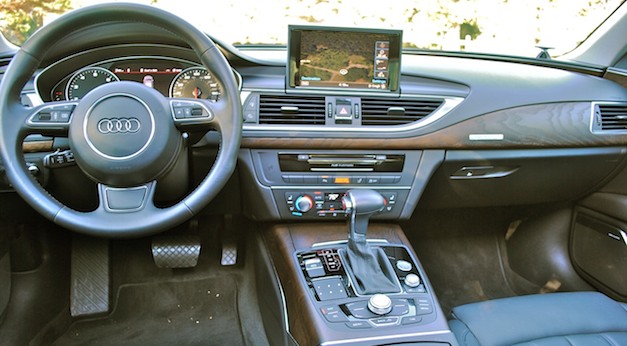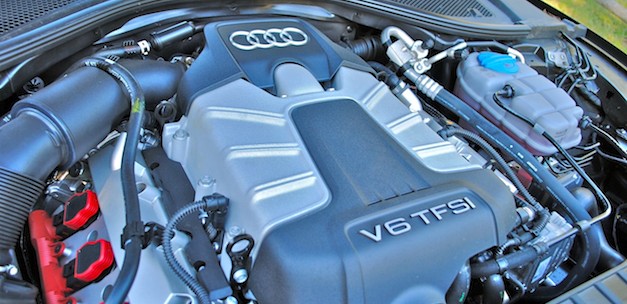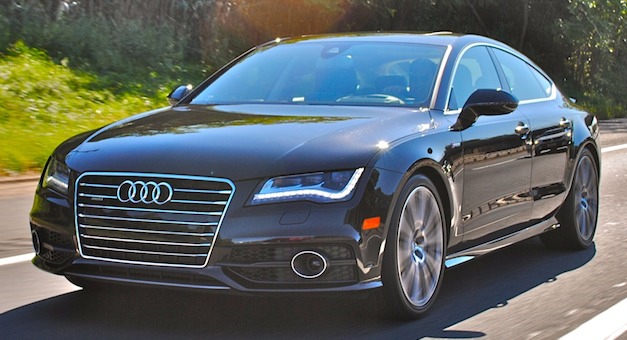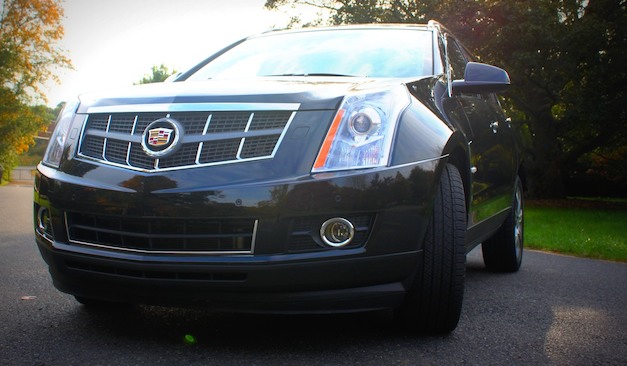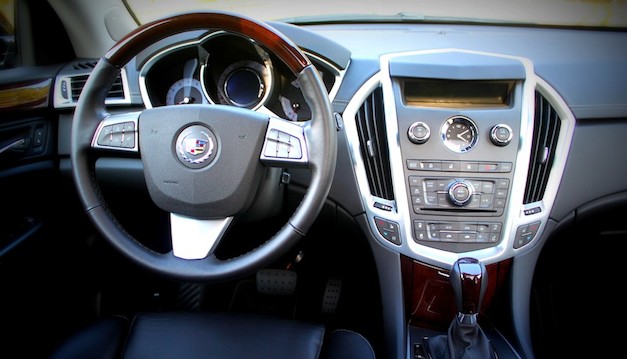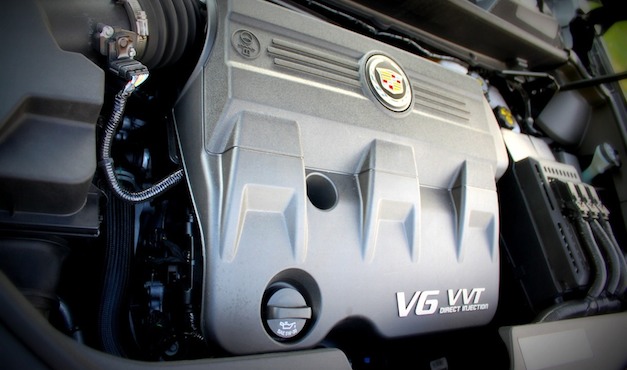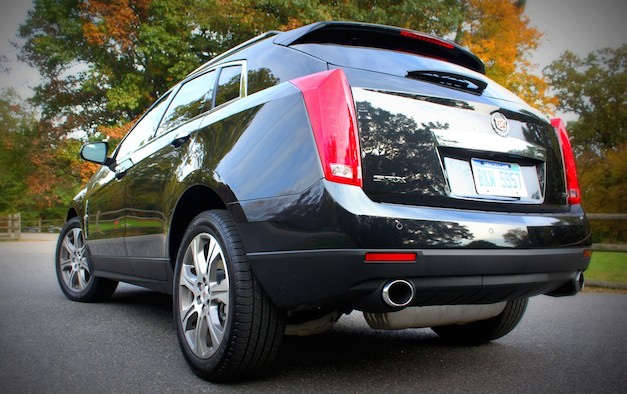You're bound to turn heads behind the wheel of the 604-horsepower Mercedes SL65 AMG, a sleek two-door convertible with a 6-liter, V-12 biturbo engine. Step on the gas and you could accelerate from zero to 60 in 4.2 seconds and hit 120 miles per hour in just 12.8 seconds. And – according to insurance company data -- you’re more likely to crash than drivers of less powerful vehicles.
Meet the most expensive to insure vehicle for 2011, according to Insure.com's annual list based on a study commissioned from Quadrant Information Services. The average annual national premium for the powerful Mercedes SL65 AMG roadster is $3,543.81 -- and that's for a good driver who hasn't racked up any speeding tickets or previous car insurance claims.
Of course if the SL65’s $198,750 manufacturer's suggested retail price is within reach, maybe you aren’t worrying much about saving money on car insurance rates.
See the full lists of the most and least expensive cars to insure below. And use Insure.com’s car insurance rates tool (at right) to see average annual premiums by model, for each state or nationally.
But if you’re a more typical car insurance shopper, your auto insurance quote should be a consideration if you’re looking for a 2011 vehicle. After all, why shop for the best deal on a vehicle, only to find out it carries exorbitant insurance costs?
The BMW 750i, the No. 2 most expensive vehicle to insure, is a luxury sedan, featuring a 400-horsepower V-8 engine, and is packed with luxury components, such as a navigation system that responds to voice commands, a power two-way tilt moon roof and a 10-speaker sound system. Repairing just one feature after a crash could cost a small fortune.
A vehicle’s premiums for collision and comprehensive coverage are largely determined by that vehicle’s "loss history," meaning the frequency and severity of claims that are typically filed for that model by other drivers. Thus, cars chosen for flash and speed – and even mundane cars typically chosen by young, inexperienced drivers – will pile up claims and thus garner higher insurance rates.
Add in a driver with a history of traffic violations, claims or accidents and you’ve got a recipe for truly painful car insurance prices.
The Toyota Sienna and the Toyota Sienna LE minivans earn the No. 2 and No. 3 spots, respectively for being the least costly to insure.
"Family vehicles driven by soccer moms aren't as likely to get into crashes as flashier sporty models," Rader says. "Soccer-mom vehicles are driven by people who are generally not driving aggressively, aren't speeding and often aren't driving during peak commuting hours."
Discounts for safety equipment that goes beyond the standard requirements can also bring insurance costs down, such as electronic stability control, which can help drivers avoid accidents, and overhead airbags, says Peter Moraga, a spokesperson for the Californian Insurance Information Network.
Consider this: If you live in California, the difference between the most and least expensive cars to insure is more than $4,700 annually (that’s for insuring an Aston Martin DB9 Volante versus a Chevy Traverse LS).
If you live in New York, the Aston Martin DB9s and the Rolls Royce Phantom top the list. Wave hello if they drive by your Chrysler Town & Country LX or Nissan Cube SL – you’ve got some of the lowest car insurance rates in the state.
Use Insure.com’s car insurance rates tool (above) to see average annual premiums in your state.
Survey methodology
Insure.com commissioned a study from Quadrant Information Services that calculated the average premiums for a male driver (see full profile below) using car insurance rates from six large carriers (State Farm, Allstate, Progressive, GEICO, Farmers and Nationwide) in 10 ZIP codes per state. Not all models are available for calculating average rates, especially some exotic cars, which is why you won't see Lamborghinis on the list — although you can assume those carry hefty insurance bills.
Averages are based on a single 40-year-old male driver who commutes 12 miles to work each day, with policy limits of 100/300/50 ($100,000 for injury liability for one person, $300,000 for all injuries and $50,000 for property damage in an accident) and a $500 deductible on collision and comprehensive coverage. He has a clean driving record and good credit. The rate includes uninsured motorist coverage. Average rates are for comparative purposes; your rate will depend on your personal factors.
Of course if the SL65’s $198,750 manufacturer's suggested retail price is within reach, maybe you aren’t worrying much about saving money on car insurance rates.
See the full lists of the most and least expensive cars to insure below. And use Insure.com’s car insurance rates tool (at right) to see average annual premiums by model, for each state or nationally.
But if you’re a more typical car insurance shopper, your auto insurance quote should be a consideration if you’re looking for a 2011 vehicle. After all, why shop for the best deal on a vehicle, only to find out it carries exorbitant insurance costs?
What drives auto insurance quotes sky high?
"Any vehicle that would cause a teenage boy to stop and gawk would likely cost a pretty penny to insure," says Russ Rader, a spokesperson for the Insurance Institute for Highway Safety's Highway Loss Data Institute. "Many of the vehicles at the top of the list cost as much as a small house to buy, and that means they're costly to fix."The BMW 750i, the No. 2 most expensive vehicle to insure, is a luxury sedan, featuring a 400-horsepower V-8 engine, and is packed with luxury components, such as a navigation system that responds to voice commands, a power two-way tilt moon roof and a 10-speaker sound system. Repairing just one feature after a crash could cost a small fortune.
A vehicle’s premiums for collision and comprehensive coverage are largely determined by that vehicle’s "loss history," meaning the frequency and severity of claims that are typically filed for that model by other drivers. Thus, cars chosen for flash and speed – and even mundane cars typically chosen by young, inexperienced drivers – will pile up claims and thus garner higher insurance rates.
Add in a driver with a history of traffic violations, claims or accidents and you’ve got a recipe for truly painful car insurance prices.
Scoring cheap car insurance
Looking for a good car insurance quote? On the opposite end of the spectrum are vehicles that would make a teenager yawn: Practical minivans and SUVs that appeal to family drivers. This year's cheapest vehicle to insure is the Chrysler Town & Country LX minivan. Its national average annual premium is $1,091.80, a third of the cost of insuring the Mercedes SL65 AMG.The Toyota Sienna and the Toyota Sienna LE minivans earn the No. 2 and No. 3 spots, respectively for being the least costly to insure.
"Family vehicles driven by soccer moms aren't as likely to get into crashes as flashier sporty models," Rader says. "Soccer-mom vehicles are driven by people who are generally not driving aggressively, aren't speeding and often aren't driving during peak commuting hours."
Discounts for safety equipment that goes beyond the standard requirements can also bring insurance costs down, such as electronic stability control, which can help drivers avoid accidents, and overhead airbags, says Peter Moraga, a spokesperson for the Californian Insurance Information Network.
Car insurance rates where you live
"When shopping for a vehicle you have to look for safety as opposed to sexy," advises Moraga. "A safer car is not only going to save your life, it's also going to lower your insurance rates."Consider this: If you live in California, the difference between the most and least expensive cars to insure is more than $4,700 annually (that’s for insuring an Aston Martin DB9 Volante versus a Chevy Traverse LS).
If you live in New York, the Aston Martin DB9s and the Rolls Royce Phantom top the list. Wave hello if they drive by your Chrysler Town & Country LX or Nissan Cube SL – you’ve got some of the lowest car insurance rates in the state.
Use Insure.com’s car insurance rates tool (above) to see average annual premiums in your state.
2011 vehicles with the lowest car insurance rates
| Rank | Make | Model | Style | Cylinders | National average annual premium |
| 1 | Chrysler | Town & Country LX | 4 Door Wagon | 6 | $1,091.80 |
| 2 | Toyota | Sienna | 5 Door Wagon | 4 | $1,100.66 |
| 3 | Toyota | Sienna LE | 5 Door Wagon | 4 | $1,107.70 |
| 4 | Honda | Odyssey LX | 5 Door 2WD SOHC | 6 | $1,114.62 |
| 5 | Nissan | Murano SL | 2WD 4 Door Utility | 6 | $1,127.89 |
| 6 | Jeep | Wrangler Unlimited Sport | 4WD 4 Door Utility | 6 | $1,131.27 |
| 7 | Honda | Odyssey EX | 5 Door 2WD SOHC | 6 | $1,138.16 |
| 8 | Toyota | Sienna | 5 Door Wagon | 6 | $1,142.94 |
| 9 | Ford | Escape XLS | 4WD 4 Door SUV | 4 | $1,150.26 |
| 10 | Toyota | Highlander | 4 Door 2WD Utility | 4 | $1,154.02 |
| 11 | Honda | CR-V LX | 5 Door 2.4L | 4 | $1,155.44 |
| 12 | Hyundai | Santa Fe GLS | 4 Door 2WD Utility | 4 | $1,157.66 |
| 13 | Jeep | Patriot Sport | 2WD 4 Door Utility | 4 | $1,157.70 |
| 14 | Jeep | Wrangler Unlimited Sahara | 2WD 4 Door Utility | 6 | $1,161.20 |
| 15 | Jeep | Wrangler Sport | 4WD 2 Door 3.8L Utility | 6 | $1,162.97 |
| 16 | Mazda | Tribute I | 2WD 4 Door Utility | 4 | $1,163.24 |
| 17 | Ford | Escape XLT | 4WD 4 Door SUV | 4 | $1,166.20 |
| 18 | Chrysler | Town & Country Touring | 4 Door Wagon | 6 | $1,167.38 |
| 19 | Honda | Odyssey EX-RES | 5 Door 2WD SOHC | 6 | $1,167.93 |
| 20 | Subaru | Forester X | 4 Door SUV AWD | 4 | $1,170.45 |
2011 vehicles with the highest car insurance rates
| Rank | Make | Model | Style | Cylinders | National average annual premium |
| 1 | Mercedes | SL65 AMG | 2 Door Convertible | 12 | $3,543.81 |
| 2 | BMW | 750i | 4 Door Sedan Hybrid | 8 | $3,280.70 |
| 3 | BMW | 750Li | 4 Door Sedan Hybrid | 8 | $3,280.70 |
| 4 | Mercedes | SL63 AMG | 2 Door Convertible | 8 | $3,263.46 |
| 5 | Mercedes | S65 AMG | 4 Door Sedan Turbo | 12 | $3,220.86 |
| 6 | Aston Martin | DB9 | 2 Door Coupe | 12 | $3,120.45 |
| 7 | Mercedes | CL600 | 2 Door Coupe | 12 | $3,114.28 |
| 8 | Porsche | 911 Carrera S | 2 Door Cabriolet | 6 | $3,092.31 |
| 9 | Aston Martin | DB9 Volante | 2 Door Convertible | 12 | $3,088.96 |
| 10 | Mercedes | G55 AMG | 4WD 4 Door Utility | 8 | $3,086.49 |
| 11 | Mercedes | CL65 AMG | 2 Door Coupe | 12 | $3,063.73 |
| 12 | Mercedes | CL63 AMG | 2 Door Coupe | 8 | $3,058.69 |
| 13 | Porsche | 911 Carrera 4S | 2 Door Cabriolet | 6 | $3,046.87 |
| 14 | Mercedes | SL550 | 2 Door Convertible | 8 | $2,942.97 |
| 15 | Jaguar | XJ L Supercharged | 2WD 4.2L 4 Door Sedan | 8 | $2,940.94 |
| 16 | Jaguar | XJ L Supersport | 2WD 4.2L 4 Door Sedan | 8 | $2,940.94 |
| 17 | Porsche | 911 Carrera 4 | 2 Door Cabriolet | 6 | $2,921.61 |
| 18 | Porsche | 911 Carrera S | 2 Door Coupe | 6 | $2,919.90 |
| 19 | Mercedes | S63 AMG | 4 Door Sedan | 8 | $2,898.30 |
| 20 | Jaguar | XJ Supercharged | 2WD 4.2L 4 Door Sedan | 8 | $2,853.24 |
Survey methodology
Insure.com commissioned a study from Quadrant Information Services that calculated the average premiums for a male driver (see full profile below) using car insurance rates from six large carriers (State Farm, Allstate, Progressive, GEICO, Farmers and Nationwide) in 10 ZIP codes per state. Not all models are available for calculating average rates, especially some exotic cars, which is why you won't see Lamborghinis on the list — although you can assume those carry hefty insurance bills.
Averages are based on a single 40-year-old male driver who commutes 12 miles to work each day, with policy limits of 100/300/50 ($100,000 for injury liability for one person, $300,000 for all injuries and $50,000 for property damage in an accident) and a $500 deductible on collision and comprehensive coverage. He has a clean driving record and good credit. The rate includes uninsured motorist coverage. Average rates are for comparative purposes; your rate will depend on your personal factors.
 In a perfect world for beleaguered travelers, there would be no extensive security checks, delayed flights or lost baggage. Travel insurance aims to take some of the sting out of travel problems.
In a perfect world for beleaguered travelers, there would be no extensive security checks, delayed flights or lost baggage. Travel insurance aims to take some of the sting out of travel problems. That's one reason some travelers are opting for "cancel for any reason" upgrades to their policies, available from most of the major travel insurance providers. Though more expensive, cancel for any reason coverage typically allows travelers to scrap their trip for any reason, no matter how minor, and recoup most of their money so long as they cancel 48 hours or more in advance.
That's one reason some travelers are opting for "cancel for any reason" upgrades to their policies, available from most of the major travel insurance providers. Though more expensive, cancel for any reason coverage typically allows travelers to scrap their trip for any reason, no matter how minor, and recoup most of their money so long as they cancel 48 hours or more in advance.